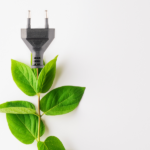Introduction
As our planet faces the challenges of climate change and the depletion of fossil fuel resources, the need for sustainable and environmentally friendly energy sources has never been more urgent. Green energy solutions, with their focus on renewable resources, are gaining significant attention worldwide. In this article, we will explore the concept of green energy solutions, their importance, benefits, various types, challenges in implementation, and top solutions for both homes and businesses. We will also discuss the steps individuals and organizations can take to implement green energy solutions and the future outlook for this evolving field.
What is Green Energy Solutions?

Green energy solutions refer to sustainable and renewable energy sources that provide an alternative to traditional fossil fuel-based energy. These solutions harness the power of natural resources such as sunlight, wind, water, and geothermal heat to generate electricity or heat without harming the environment. By utilizing green energy solutions, we can reduce greenhouse gas emissions, combat climate change, and create a sustainable future for generations to come.
The Importance of Green Energy Solutions

Green energy solutions play a vital role in mitigating the negative impacts of traditional energy sources on the environment. Here are some key reasons why green energy solutions are crucial:
1. Environmental Preservation
Traditional energy sources, such as coal and oil, emit significant amounts of greenhouse gases into the atmosphere, contributing to global warming and air pollution. Green energy solutions, on the other hand, produce clean energy, minimizing carbon emissions and other harmful pollutants. By transitioning to green energy, we can protect our ecosystems, reduce air pollution, and preserve natural resources.
2. Energy Security
Relying heavily on fossil fuels for energy leaves us vulnerable to price fluctuations and geopolitical tensions. Green energy solutions, which are based on renewable resources, offer greater energy security. By diversifying our energy sources, we can reduce our dependence on finite fossil fuel reserves and enhance our energy independence.
3. Job Creation and Economic Growth
Investing in green energy solutions creates new job opportunities across various sectors, from research and development to manufacturing and installation. Moreover, utilizing renewable energy sources stimulates local economies, as it reduces the need for expensive energy imports. By transitioning to green energy, we can foster economic growth and promote sustainable development.
Benefits of Green Energy Solutions

Green energy solutions bring numerous benefits to both the environment and society as a whole. Let’s explore some of these advantages:
1. Reduced Carbon Footprint
One of the most significant benefits of green energy solutions is the reduction of carbon emissions. Unlike fossil fuels, which release carbon dioxide when burned, renewable energy sources produce little to no greenhouse gases during operation. By shifting to green energy, we can significantly shrink our carbon footprint and combat climate change.
2. Energy Cost Savings
While the initial investment in green energy solutions may be higher, the long-term savings can be substantial. Renewable energy sources, such as solar and wind, have lower operating costs compared to traditional energy sources. By generating clean energy on-site, individuals and businesses can reduce their electricity bills and achieve energy cost savings over time.
3. Healthier Living Environment
Green energy solutions contribute to improving air and water quality. Unlike coal-fired power plants, which emit pollutants that can cause respiratory problems and other health issues, renewable energy sources have minimal environmental impacts. By embracing green energy, we can create cleaner and healthier living environments for ourselves and future generations.
4. Technological Advancements
The development and adoption of green energy solutions drive innovation and technological advancements. As more resources are dedicated to research and development in renewable energy technologies, we can expect breakthroughs that enhance energy efficiency and make green solutions more accessible and affordable.
Types of Green Energy Solutions

There are various types of green energy solutions available, each harnessing specific renewable resources. Let’s explore some of these solutions:
Solar Energy Solutions
Solar energy solutions harness the power of sunlight to generate electricity through photovoltaic (PV) panels or solar thermal systems. These solutions are cost-effective, have low maintenance requirements, and can be installed in various settings, from residential rooftops to vast solar farms.
Wind Energy Solutions
Wind energy solutions capture the kinetic energy of the wind and convert it into electricity using wind turbines. These solutions are particularly effective in coastal areas and open landscapes with consistent wind patterns. Wind energy is a rapidly growing sector, and advancements in turbine technology continue to increase its efficiency and generate higher power outputs.
Hydroelectric Energy Solutions
Hydroelectric energy solutions utilize the energy of flowing or falling water to generate electricity. This is achieved by constructing dams or utilizing natural water currents. Hydroelectric power plants have long lifespans and can provide a stable and reliable source of renewable energy. However, their implementation requires careful consideration of environmental impact and land use.
Geothermal Energy Solutions
Geothermal energy solutions tap into the Earth’s natural heat to generate electricity or provide heating and cooling for buildings. By accessing hot water or steam reservoirs deep underground, geothermal power plants produce clean energy with relatively low emissions. Geothermal systems can also be used for residential and commercial heating and cooling through ground-source heat pumps.
Biomass Energy Solutions
Biomass energy solutions utilize organic materials such as wood, agricultural waste, or dedicated energy crops to produce heat or generate electricity. Biomass can be burned directly or converted into biofuels through processes like anaerobic digestion or pyrolysis. These solutions offer a renewable alternative to fossil fuel-based heating and transportation.
Tidal Energy Solutions
Tidal energy solutions harness the power of ocean tides to generate electricity. This is achieved through the use of underwater turbines that rotate as the tides move in and out. Tidal energy is a predictable and reliable form of renewable energy, although its implementation requires suitable coastal conditions and infrastructure.
Challenges in Implementing Green Energy Solutions
While green energy solutions offer immense benefits, there are several challenges to overcome in their widespread implementation. Let’s explore some of these challenges:
Cost
The upfront costs associated with installing green energy systems can be a barrier for many individuals and businesses. While the long-term cost savings are significant, the initial investment can be substantial. However, continued advancements in technology and economies of scale are making green energy solutions increasingly cost-effective.
Infrastructure
Implementing green energy solutions often requires significant infrastructure development. For example, setting up wind farms or solar power plants requires suitable land, transmission lines, and grid integration. Expanding the infrastructure necessary for widespread adoption of green energy can be a complex and time-consuming process.
Intermittency
Unlike traditional power plants, which can generate electricity consistently, some green energy sources like solar and wind are intermittent. This means that their power output varies based on weather conditions and time of day. Intermittency poses a challenge for grid operators in ensuring a stable supply of electricity. However, advancements in energy storage and grid integration technologies are addressing this challenge.
Policy and Regulation
The development and deployment of green energy solutions heavily depend on supportive policies and regulations. Governments play a crucial role in promoting renewable energy through incentives, subsidies, and mandates. Inconsistent policies or inadequate regulatory frameworks can hinder the growth of the green energy sector.
Top Green Energy Solutions for Homes
Implementing green energy solutions at the individual level is a great way to contribute to a sustainable future. Here are some top solutions for homes:
Solar Panels
Solar panels, or photovoltaic panels, harness sunlight to generate electricity for residential use. By installing solar panels on rooftops, homeowners can produce clean energy and reduce their reliance on the grid. Solar panels are becoming more affordable and efficient, making them an attractive option for homeowners.
Wind Turbines
While wind turbines are typically associated with large-scale wind farms, smaller-scale wind turbines are also available for residential use. These turbines can generate electricity by capturing wind energy on-site. However, installing wind turbines requires careful consideration of local wind conditions and zoning regulations.
Geothermal Heat Pumps
Geothermal heat pumps utilize the Earth’s constant underground temperatures to provide heating and cooling for homes. These systems circulate a fluid through a network of underground pipes, absorbing heat in the winter and dissipating it in the summer. Geothermal heat pumps are highly efficient and can significantly reduce energy consumption for heating and cooling.
Energy-Efficient Appliances
Switching to energy-efficient appliances can have a significant impact on reducing energy consumption in homes. Energy Star-certified appliances use less energy while maintaining optimal performance. From refrigerators and dishwashers to washing machines and HVAC systems, choosing energy-efficient options can save both energy and money.
LED Lighting
Replacing traditional incandescent light bulbs with LED bulbs is a simple yet effective way to save energy. LED bulbs use up to 75% less energy than incandescent bulbs and last significantly longer. Additionally, LED lighting offers more control over brightness and can enhance the ambiance of a home.
Top Green Energy Solutions for Businesses
Businesses have a significant role to play in promoting green energy solutions. Here are some top solutions for businesses:
Energy Management Systems
Energy management systems help businesses monitor and optimize their energy consumption. These systems track energy usage, identify inefficiencies, and provide actionable insights for energy savings. By implementing energy management systems, businesses can reduce costs and improve their environmental performance.
Green Building Design
Designing and constructing green buildings minimizes energy consumption and environmental impact. Features such as energy-efficient insulation, solar power integration, and natural lighting help reduce reliance on conventional energy sources. Green building certifications, like LEED (Leadership in Energy and Environmental Design), provide guidelines for environmentally sustainable construction.
Energy-Efficient HVAC Systems
Heating, ventilation, and air conditioning (HVAC) systems account for a significant portion of energy usage in commercial buildings. Upgrading to energy-efficient HVAC systems can result in substantial energy savings without compromising comfort levels. Technologies such as variable speed drives and advanced controls optimize energy consumption based on occupancy and climate conditions.
Renewable Energy Purchasing
Businesses can support green energy by purchasing renewable energy directly from suppliers or investing in renewable energy credits. This demonstrates a commitment to sustainability while supporting the expansion of renewable energy generation. Many utility companies offer green energy purchasing options for businesses of all sizes.
Waste-to-Energy Solutions
Waste-to-energy solutions convert organic waste, such as food scraps and agricultural residue, into energy through processes like anaerobic digestion or incineration. These solutions not only reduce waste sent to landfills but also generate renewable energy. Waste-to-energy facilities can be integrated into existing waste management systems, providing a sustainable approach to waste disposal.
Steps to Implement Green Energy Solutions
Implementing green energy solutions requires careful planning and execution. Here are essential steps to follow:
Conduct an Energy Audit
Start by conducting an energy audit to assess current energy usage and identify areas for improvement. An energy audit can help pinpoint energy inefficiencies and determine the most suitable green energy solutions for your specific needs.
Develop an Energy Management Plan
Based on the findings of the energy audit, develop a comprehensive energy management plan. This plan should outline specific goals, strategies, and timelines for implementing green energy solutions. It should also include budget considerations and a monitoring and evaluation framework.
Invest in Renewable Energy Technologies
Select the most appropriate green energy solutions based on your energy needs and available resources. This may involve investing in solar panels, wind turbines, geothermal systems, or other renewable energy technologies. Consider factors such as location, resource availability, and financial feasibility.
Educate and Involve Employees
Engage employees in the transition to green energy by providing education and training on energy conservation practices. Encourage employee participation and feedback to foster a culture of sustainability within the organization.
Monitor and Evaluate Performance
Regularly monitor and evaluate the performance of your green energy solutions to ensure optimal operation and energy savings. Track energy consumption, cost savings, and greenhouse gas emissions to measure the success of your initiatives. Make adjustments as needed to maximize the benefits of your green energy investments.
The Future of Green Energy Solutions
The future of green energy solutions looks promising as the world recognizes the need to reduce carbon emissions and transition to sustainable energy sources. Advances in technology, declining costs, and supportive policies are driving the growth of the green energy sector. As more countries and industries embrace renewable energy, we can expect increased innovation, improved efficiencies, and expanded access to green energy solutions. Together, we can create a cleaner and more sustainable future for all.
FAQs
What is the role of government in promoting green energy solutions?
Government plays a crucial role in promoting green energy solutions through policies and regulations. By providing incentives, subsidies, and mandates, governments encourage the adoption of renewable energy sources and create a favorable environment for investment in green technologies.
How can individuals contribute to green energy solutions?
Individuals can contribute to green energy solutions by implementing renewable energy technologies at their homes, such as solar panels or wind turbines. Energy conservation practices, such as using energy-efficient appliances and reducing energy waste, also play a significant role.
Are green energy solutions economically feasible?
While the upfront costs of implementing green energy solutions may be higher, long-term savings can be substantial. As technology advances and economies of scale come into play, the cost of renewable energy generation continues to decrease, making green energy solutions economically viable.
What are the long-term benefits of green energy solutions?
Green energy solutions offer numerous long-term benefits, including reduced carbon emissions, improved air and water quality, energy cost savings, job creation, and technological advancements. By transitioning to sustainable energy sources, we can create a healthier environment and pave the way for a sustainable future.
Conclusion
Green energy solutions provide a sustainable and environmentally friendly alternative to traditional energy sources. From solar and wind to hydroelectric and geothermal, there are various green energy solutions available to meet our energy needs. While challenges exist, such as cost and infrastructure requirements, the benefits of embracing green energy are undeniable. By implementing green energy solutions at both the individual and business levels, we can reduce our carbon footprint, save money on energy costs, and contribute to a cleaner and more sustainable future. Let’s embrace green energy solutions and pave the way for a greener world.




